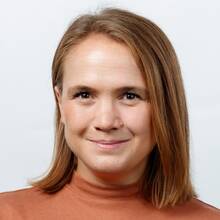As we reach the final days of the synod, the question of what happens next looms large. How will the people of God use the 11 months between this first session and the October 2024 gathering? When I imagine how that time can be used most fruitfully I think about something, or rather someone, who is largely missing from the synod in Rome: the parish priest.
It is unclear if there is anyone at the synod whose main role is that of a pastor. If there are any parish priests present, I’ve been told it’s a very small number—maybe one or two. This is unfortunate for two reasons. First, the parish is most Catholics’ primary experience of church, and even if parishioners are not plugged into the community, they know who “Father” is. Second, if synodality is to take root throughout the entire church, it must begin at the parish level. If you don’t have the buy-in of your parish priest, the soil for synodality will be rocky.
Archbishop Timothy Broglio, the archbishop for the Military Services, USA, and president of the U.S. Conference of Catholic Bishops, said as much in a Vatican press briefing on Oct. 26. The archbishop noted that only 1 percent of U.S. Catholics took part in the listening sessions of the diocesan phase. In response, Christopher Lamb, the Rome correspondent for The Tablet, asked Archbishop Broglio, “To what extent do you have personal responsibility for that lack of participation?,” pointing out that the synod was not on the agenda at the bishops’ recent June meeting.
“I’m sure we do have some responsibility for it,” the archbishop said, before addressing how the bishops could encourage greater participation in the interim period. The process, he said, “is going to have to be very capillary. The diocesan bishops can do a number of things, but if the parish priests aren’t on board, it won’t go beyond the chancery. So that’s certainly something we have to do, engage the priests so that they will then engage their people.”
There has been much talk about the role of bishops at this month’s meeting, understandably, given this is a synod of bishops. And there has rightly been excitement about the fact that bishops are sitting side-by-side with and listening to lay women and men. But I worry about the lack of priests in the synod hall. Fighting clericalism does not mean forgetting about priests.
Today I spoke with a young woman who has been very involved with the synod in her diocese. She decided to fly over to Rome for the final week of the synod, and when she told her priest, he seemed skeptical about the process. She ended up talking to him for over an hour about his thoughts and fears about the synod. His concerns were more practical than ideological. His experience of the first two years of the synod had been receiving orders from on high without any real guidance. He wanted not only an intelligible explanation of synodality but also models of where it’s been done well at the parish level. He needed a toolbox, not a barrage of emails.
Of course, the synod is discussing precisely how to build those parish and diocesan structures for a more responsive and consultative church. But for the synod to succeed, we can’t wait until we have the perfect structures in place or until the final document comes out in 2024. Over the next year, we are asking parish priests, and the entire people of God, to fly this synodal plane while it’s still being built.
We know that many parish priests are already stretched thin and burnt out. Many of them also do not trust their bishop. We cannot expect them to become the footsoldiers of synodality before asking them about their fears and hopes for the synod. When the U.S. bishops return to their diocese, I hope they each take the time to sit at a round table with their priests, share their experience in Rome and then just listen.
Here’s what’s happening at the synod:
- Yesterday, synod members submitted edits to the draft the the synthesis document. At today’s press briefing, Paul Ruffini, the prefect of the Dicastery for Communications, said over 1,150 amendments were proposed.
- Today, the writers of the synthesis report are working to incorporate those edits. The document will be voted on by the synod tomorrow morning and released to the public later in the day.
- Today Pope Francis ordered the Vatican to reopen the investigation into disgraced former Jesuit Marco Rupnik, who faces multiple allegations of abuse of adults.
- Synod participants attended a prayer vigil for peace called for by Pope Francis in St. Peter’s Basilica.








